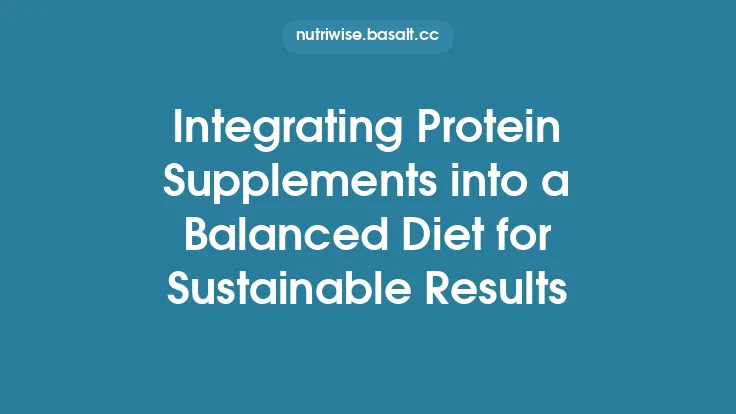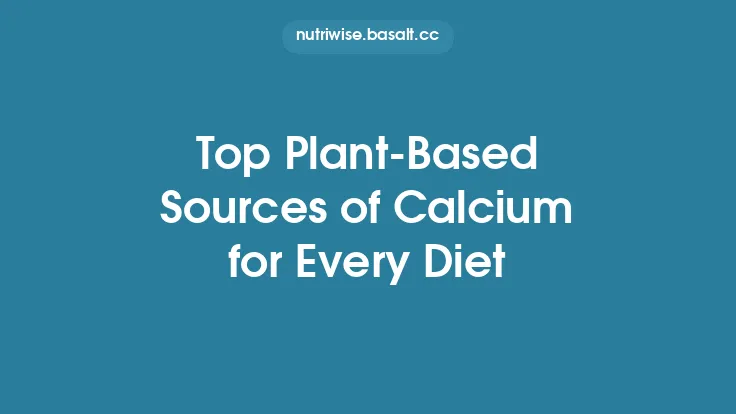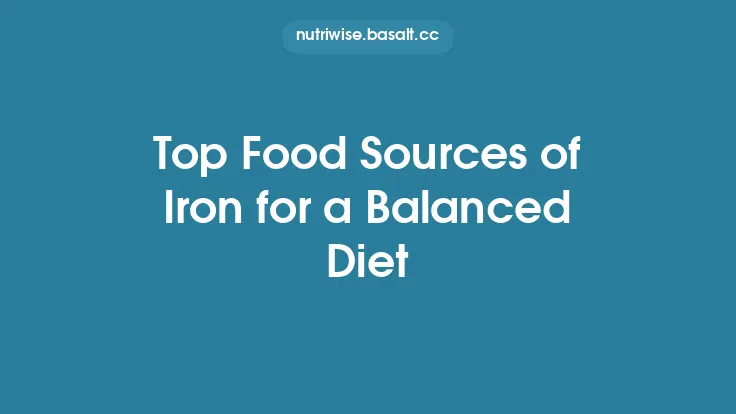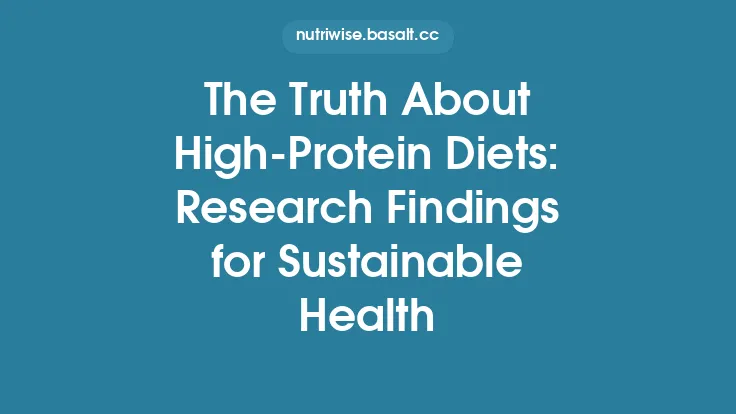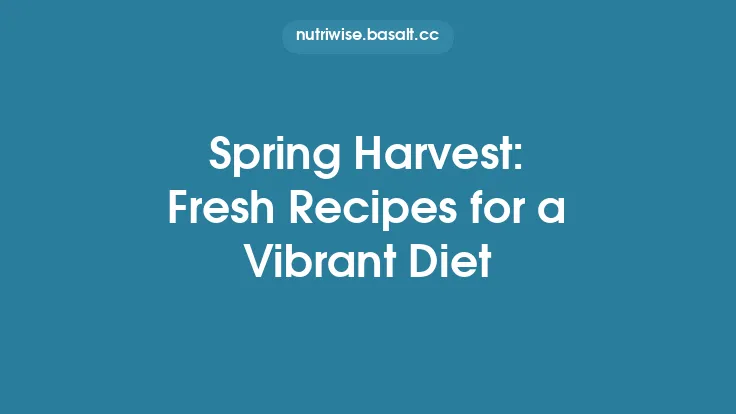Plant‑based proteins have moved from niche health food to mainstream staple, not only because they deliver the essential amino acids our bodies need, but also because they align with a low‑impact, ethical approach to eating. When you choose protein‑rich plants that grow efficiently, require fewer inputs, and leave a smaller carbon footprint, you’re supporting a food system that can feed a growing global population without exhausting natural resources. Below, we explore ten of the most powerful plant‑based protein sources, highlighting their nutritional strengths, environmental credentials, and practical ways to incorporate them into everyday meals.
1. Lentils – A Versatile Protein Pillar
Protein punch: About 18 g of protein per cooked cup (≈200 g).
Why they’re sustainable: Lentils belong to the legume family, which fixes atmospheric nitrogen into the soil through a symbiotic relationship with rhizobial bacteria. This natural fertilization reduces the need for synthetic nitrogen fertilizers—a major source of greenhouse‑gas emissions. Lentils also have a short growing season (≈90 days) and can be harvested with minimal irrigation in many regions.
Nutrient highlights: In addition to protein, lentils provide 40 % of the daily value (DV) for folate, 30 % for iron, and a good dose of dietary fiber (≈15 g per cup). Their low glycemic index makes them a steady source of energy.
Culinary tips:
- Soups & stews: Simmer with aromatics, carrots, and tomatoes for a hearty bowl.
- Salads: Cook, cool, and toss with leafy greens, nuts, and a lemon‑tahini dressing.
- Patty base: Blend cooked lentils with spices, oats, and a binder (e.g., flaxseed meal) for veggie burgers.
Storage: Dried lentils keep indefinitely in a cool, dry pantry. Cooked lentils store 4–5 days refrigerated or 2 months frozen.
2. Chickpeas – The Global Legume Workhorse
Protein punch: Roughly 15 g per cooked cup.
Sustainability edge: Like other pulses, chickpeas enrich soil nitrogen and thrive on modest water inputs. Their hard seed coat protects them during transport, reducing post‑harvest losses.
Nutrient highlights: High in manganese, phosphorus, and vitamin B6. A cup supplies about 12 % of the DV for calcium and 20 % for magnesium. The soluble fiber (especially the type called galactooligosaccharides) supports gut health.
Culinary tips:
- Hummus: Blend cooked chickpeas with olive oil, lemon, garlic, and tahini for a protein‑rich dip.
- Roasted snack: Toss with spices and roast for a crunchy, portable snack.
- Curries & stews: Add whole or smashed chickpeas to tomato‑based sauces for texture and protein.
Storage: Dried chickpeas last years; cooked beans keep 4 days in the fridge or up to 3 months frozen.
3. Black Beans – The Dark‑Horse Protein Source
Protein punch: Approximately 15 g per cooked cup.
Environmental profile: Black beans are drought‑tolerant and can be intercropped with corn or other staples, improving biodiversity and reducing pest pressure without chemicals.
Nutrient highlights: Rich in anthocyanins (the pigments that give them their deep color), which have antioxidant properties. They also deliver potassium, folate, and iron.
Culinary tips:
- Burrito bowls: Combine with brown rice, salsa, and avocado for a balanced meal.
- Soup base: Puree with vegetable broth for a silky black‑bean soup.
- Veggie burgers: Mix with quinoa, spices, and binders for a hearty patty.
Storage: Dried beans keep indefinitely; cooked beans store 5 days refrigerated or 2 months frozen.
4. Edamame (Young Soybeans) – Fresh, Complete Protein
Protein punch: About 17 g per cup of shelled edamame (≈155 g).
Sustainability notes: Soybeans are among the most efficient protein crops per hectare, delivering high yields with relatively low water use. When sourced from responsibly managed farms (e.g., certified non‑GMO or organic), they avoid the deforestation concerns linked to some large‑scale soy production.
Nutrient highlights: A complete protein, meaning it contains all nine essential amino acids in adequate proportions. Also high in vitamin K, folate, and omega‑3 fatty acid α‑linolenic acid (ALA).
Culinary tips:
- Snack: Lightly salted and steamed for a quick protein boost.
- Salads: Toss chilled edamame with corn, bell pepper, and a lime‑cumin dressing.
- Stir‑fries: Add to vegetable mixes for texture and protein.
Storage: Fresh edamame can be kept in the freezer for up to 12 months; cooked edamame lasts 4 days refrigerated.
5. Green Peas – Small Pods, Big Protein
Protein punch: Roughly 9 g per cooked cup.
Eco‑friendly attributes: Peas fix nitrogen like other legumes, improving soil health. They also have a short growing cycle (≈60 days) and can be harvested mechanically, reducing labor energy.
Nutrient highlights: High in vitamin C, vitamin K, and the B‑vitamin thiamine. Their fiber content (≈9 g per cup) supports satiety and digestive health.
Culinary tips:
- Purees: Blend cooked peas with mint and lemon for a vibrant spread.
- Pasta sauces: Combine with garlic, olive oil, and a splash of plant milk for a creamy sauce without dairy.
- Side dish: Sauté with shallots and herbs for a quick accompaniment.
Storage: Fresh peas freeze well; cooked peas keep 4 days refrigerated.
6. Hemp Seeds – Nutrient‑Dense Protein Nuggets
Protein punch: About 10 g per 3‑tablespoon serving (≈30 g).
Sustainability edge: Hemp grows rapidly (≈100 days to maturity) and thrives on marginal soils with minimal pesticide use. Its deep root system improves soil structure and reduces erosion.
Nutrient highlights: Contains all essential amino acids, making it a complete protein. Also rich in omega‑3 and omega‑6 fatty acids in an optimal 3:1 ratio, plus magnesium, zinc, and iron.
Culinary tips:
- Smoothie boost: Sprinkle into blended drinks for a creamy texture.
- Salad topping: Add raw or lightly toasted seeds for crunch.
- Baking: Incorporate into muffins, breads, or energy bars for added protein and healthy fats.
Storage: Store in a cool, dark place; for longer freshness, keep refrigerated or frozen to prevent oxidation of fats.
7. Pumpkin Seeds (Pepitas) – Crunchy Protein Power
Protein punch: Approximately 9 g per ounce (≈28 g).
Environmental profile: Pumpkin is a low‑input crop that tolerates a range of climates. The seeds are a by‑product of pumpkin processing, making efficient use of the whole plant.
Nutrient highlights: High in magnesium (≈40 % DV per ounce), zinc, and antioxidants such as vitamin E. Their healthy fat content (≈14 % of weight) supports heart health.
Culinary tips:
- Snack: Roast with spices for a savory treat.
- Granola: Mix with oats, dried fruit, and a drizzle of maple syrup.
- Sauces: Blend into pesto or tahini‑based sauces for added texture.
Storage: Keep in an airtight container; refrigerate to extend shelf life beyond a month.
8. Quinoa – Pseudocereal with Complete Protein
Protein punch: Roughly 8 g per cooked cup (≈185 g).
Sustainability notes: Quinoa is adapted to high‑altitude, low‑input environments, requiring little irrigation. Its resilience to pests reduces the need for chemical interventions.
Nutrient highlights: Complete protein, high in lysine (often limiting in other plant proteins). Also provides iron, magnesium, and a good amount of fiber (≈5 g per cup).
Culinary tips:
- Salads: Combine cooked quinoa with roasted vegetables, beans, and a vinaigrette.
- Breakfast porridge: Simmer with plant milk, cinnamon, and fruit.
- Stuffed peppers: Use as a filling mixed with herbs and nuts.
Storage: Dried quinoa lasts indefinitely; cooked quinoa stores 5 days refrigerated or 2 months frozen.
9. Amaranth – Tiny Grain, Mighty Protein
Protein punch: About 9 g per cooked cup (≈246 g).
Eco‑friendly aspects: Amaranth tolerates poor soils and drought, making it a climate‑resilient crop. It also has a high leaf‑to‑seed ratio, allowing dual use as a leafy vegetable and grain.
Nutrient highlights: Complete protein with a notable amount of the amino acid methionine, which is limited in many other grains. Rich in calcium (≈10 % DV per cup) and iron.
Culinary tips:
- Porridge: Cook with water or plant milk, sweeten with fruit and nuts.
- Baking: Use popped amaranth as a crunchy topping for breads or muffins.
- Side dish: Sauté cooked amaranth with garlic and herbs as a rice alternative.
Storage: Dried amaranth keeps indefinitely; cooked grains store 4 days refrigerated.
10. Seitan (Wheat Gluten) – High‑Protein Meat Substitute
Protein punch: Approximately 25 g per 3‑ounce serving (≈85 g).
Sustainability perspective: Seitan is derived from wheat gluten, a by‑product of flour milling. Using the protein fraction of wheat maximizes the utility of the crop, reducing waste. Wheat cultivation, when managed responsibly, has a relatively low water footprint compared to animal protein production.
Nutrient highlights: Very high protein density, though it lacks lysine; pairing with lysine‑rich foods (e.g., beans) creates a balanced profile. Low in fat and carbohydrates when prepared without added sugars or oils.
Culinary tips:
- Stir‑fries: Slice thinly and marinate before quick sauté.
- Grilling: Form into kebabs or steaks, brush with BBQ sauce, and grill.
- Stews: Cube and simmer in broth for a hearty, meat‑like texture.
Storage: Freshly made seitan keeps 4 days refrigerated; frozen for up to 3 months. Commercially packaged seitan often has a longer shelf life.
Conclusion – Building a Sustainable Protein Palette
Choosing any of these ten plant‑based powerhouses gives you a robust source of high‑quality protein while supporting agricultural practices that conserve water, enrich soils, and emit fewer greenhouse gases than most animal‑based alternatives. By rotating among legumes, seeds, pseudocereals, and wheat‑derived products, you not only diversify your nutrient intake but also reduce reliance on any single crop, fostering resilience in the food system.
Practical takeaways:
- Mix and match: Pair a lysine‑rich legume (e.g., lentils) with a methionine‑rich grain (e.g., quinoa) for a complete amino‑acid profile without needing specialized supplements.
- Batch‑cook: Prepare large pots of beans or lentils at the start of the week; they freeze well and become ready‑to‑use protein bases for multiple meals.
- Mind the storage: Properly sealed containers and cool, dark storage extend shelf life and preserve nutrient quality, especially for oil‑rich seeds like hemp.
- Source responsibly: Look for certifications (organic, non‑GMO, regenerative agriculture) that indicate lower environmental impact and better soil stewardship.
Integrating these protein powerhouses into your daily menu not only fuels your body with essential nutrients but also contributes to a more sustainable, ethical food future. Happy cooking!
